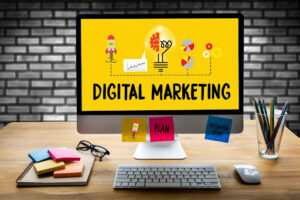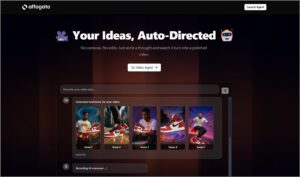
The past three decades have witnessed a revolutionary transformation in marketing, driven by technological advancement, changing consumer behaviors, and the digital revolution. This comprehensive analysis explores how marketing has evolved from traditional mass-media approaches to today’s hyper-personalized, data-driven strategies.
The Traditional Era (1994-1999)
Marketing Landscape
- Mass media dominated through television, radio, and print advertising
- Billboard and outdoor advertising played crucial roles
- Direct mail campaigns were considered cutting-edge personalization
- Trade shows and physical events were primary B2B marketing channels
Key Characteristics
- One-way communication with audiences
- Limited targeting capabilities based on broad demographics
- Long lead times for campaign planning and execution
- Difficult to measure precise ROI
- High barriers to entry for small businesses
- Geographic limitations in reach
Marketing Tools
- Television commercials
- Radio spots
- Magazine and newspaper advertisements
- Direct mail campaigns
- Telemarketing
- Yellow Pages advertising
- Trade show marketing
The Digital Dawn (2000-2009)
The Rise of Internet Marketing
- Emergence of company websites as marketing tools
- Introduction of search engine optimization (SEO)
- Pay-per-click advertising revolutionized ad pricing
- Email marketing became a direct mail alternative
- Early social media platforms appeared (MySpace, early Facebook)
Technological Advancements
- Broadband internet accessibility
- Development of content management systems
- Introduction of Google Analytics
- Early marketing automation tools
- Customer Relationship Management (CRM) systems
New Marketing Approaches
- Search engine marketing
- Banner advertising
- Email newsletters
- Basic content marketing
- Early blogging
- Forum marketing
- Affiliate programs
The Social Media Revolution (2010-2014)
Platform Proliferation
- Facebook became a marketing powerhouse
- Twitter emerged as a real-time marketing channel
- LinkedIn developed B2B marketing capabilities
- YouTube transformed video marketing
- Instagram introduced visual marketing opportunities
Mobile Transformation
- Smartphone adoption accelerated
- Mobile-optimized websites became essential
- Location-based marketing emerged
- Mobile apps as marketing channels
- SMS marketing evolution
Content Marketing Evolution
- Blogs became central to digital strategy
- Infographics gained popularity
- Video content increased
- Podcasting emerged as a marketing channel
- Social media content strategies developed
The Data-Driven Era (2015-2019)
Analytics and Automation
- Big data analytics
- Predictive modeling
- Marketing automation platforms
- Programmatic advertising
- Attribution modeling
- A/B testing at scale
Personalization and Targeting
- Customer journey mapping
- Behavioral targeting
- Retargeting/remarketing
- Dynamic content personalization
- Account-based marketing (ABM)
New Marketing Channels
- Influencer marketing
- Native advertising
- Sponsored content
- Marketing through messaging apps
- Voice search optimization
The Modern Era (2020-2024)
AI and Machine Learning
- AI-powered personalization
- Chatbots and virtual assistants
- Predictive analytics
- Automated content creation
- Smart bidding in advertising
Privacy and Trust
- GDPR and privacy regulations
- First-party data importance
- Cookie deprecation adaptation
- Trust-based marketing
- Transparency in advertising
Emerging Trends
- Video-first content (TikTok, Reels)
- Virtual and augmented reality
- Voice commerce
- Social commerce
- Sustainable marketing practices
Key Transformations Over 30 Years
1. Communication Style
- From: One-way, broadcast messaging
- To: Interactive, two-way engagement
2. Targeting Capabilities
- From: Broad demographic targeting
- To: Individual-level personalization
3. Data Usage
- From: Basic demographic data
- To: Rich behavioral and predictive analytics
4. Campaign Planning
- From: Long-term, fixed campaigns
- To: Agile, real-time optimization
5. Content Creation
- From: Periodic, high-production content
- To: Continuous, multi-format content
6. Channel Integration
- From: Siloed channel approaches
- To: Omnichannel integration
7. Measurement
- From: Estimated reach and impact
- To: Precise attribution and ROI tracking
Current Challenges and Opportunities
Challenges
- Privacy concerns and regulations
- Digital fatigue and ad blocking
- Rapid technological change
- Content saturation
- Channel fragmentation
- Data management complexity
- Skill gap in digital marketing
Opportunities
- Hyper-personalization at scale
- Enhanced customer insights
- Global market access
- Real-time optimization
- Lower barriers to entry
- Improved ROI tracking
- Innovation in customer experience
Conclusion
The evolution of marketing over the past 30 years represents one of the most dramatic transformations in business history. From the mass-market approaches of the 1990s to today’s data-driven, personalized strategies, marketing has become increasingly sophisticated, measurable, and effective. As we look to the future, the pace of change shows no signs of slowing, with new technologies and consumer behaviors continuing to reshape the marketing landscape.
The successful marketers of tomorrow will be those who can balance the power of new technologies with fundamental marketing principles, while maintaining authentic connections with their audiences in an increasingly digital world.





